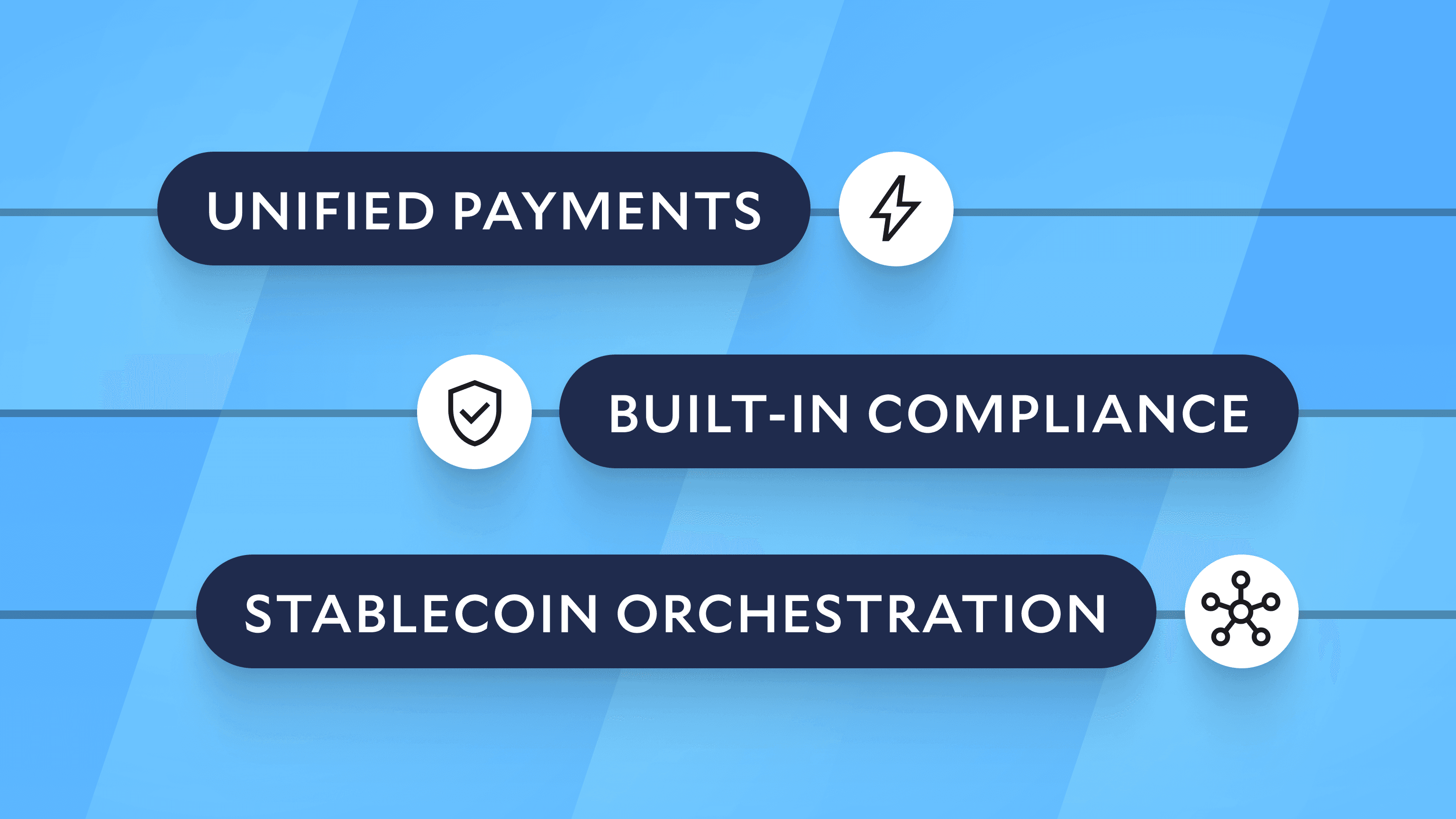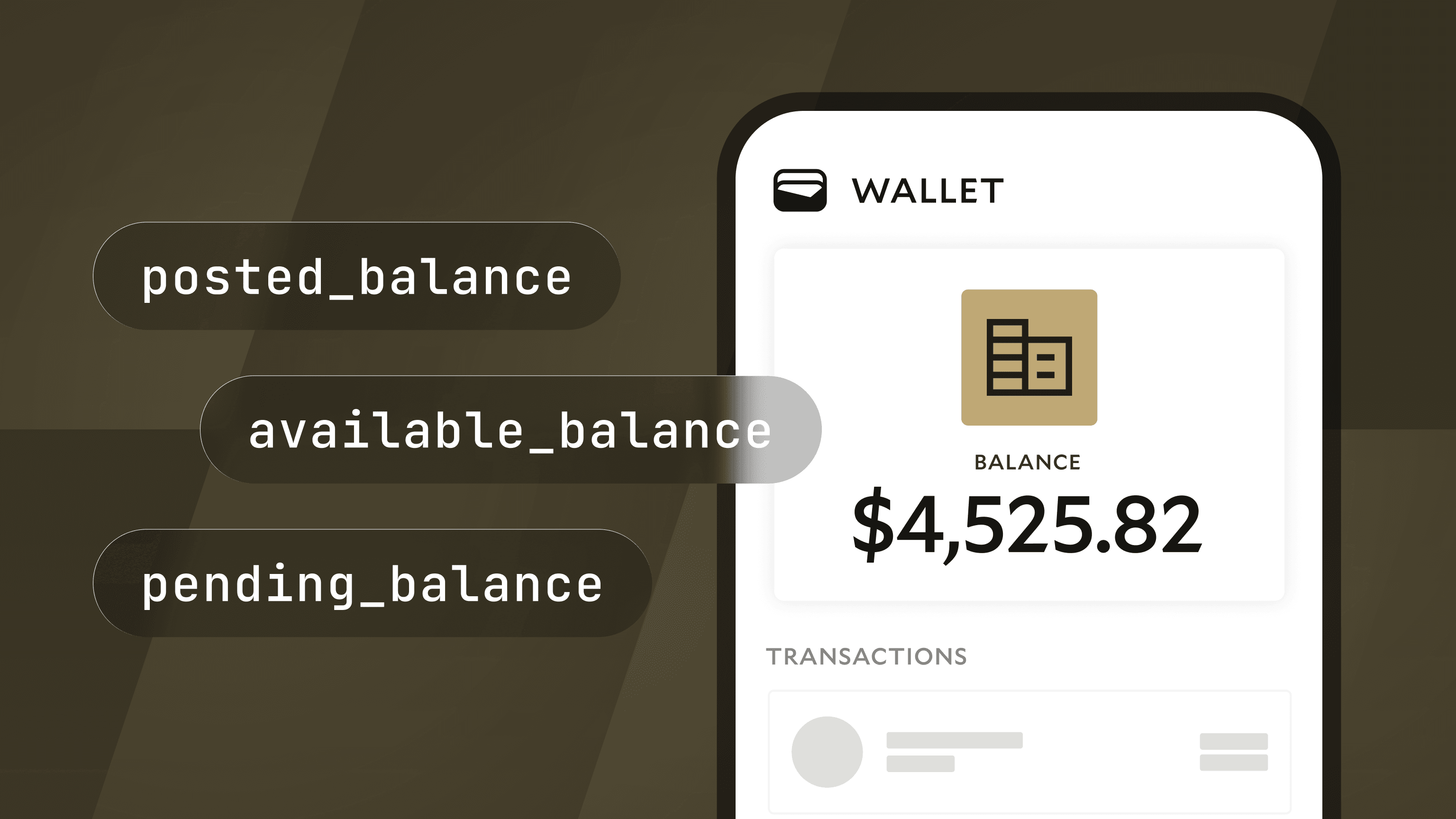Transforming Financial Operations With Faster Payments
Here, we delve into the insights from our recent webinar on how faster payments can transform the future of financial operations.

The payment landscape is rapidly transforming, with faster payment systems like Real-Time Payments (RTP®) and FedNow gaining traction across various industries. As businesses and financial institutions continue to look to the future, there's a growing interest in what these innovations will bring.
We recently hosted a webinar that explored the potential of instant payments, the challenges of adoption, and the implications for businesses and consumers alike—featuring Modern Treasury customers, Aaron Sharff, Senior Product Manager at Check and Katie Castro, Director of Commission Demands and Payments at Side; along with our own Ani Narayan, Product Manager at Modern Treasury; and moderated by Sam Aarons, CTO and Co-Founder of Modern Treasury. In this journal, we’ll recap their discussion and highlight the valuable insights they shared around adopting instant payments.
Exploring Instant Payments in the U.S. with Experts Across Industries
Q: What are the current instant real-time payment systems in the United States?
Sam: We actually have two instant real-time systems in the United States. The first is RTP, which stands for Real-Time Payments, and the second is the newer FedNow system, launched about a year ago. Both systems are very similar in function—they operate 24/7/365, allowing payments to complete end-to-end instantly, usually within 10 to 15 seconds. This is a significant improvement over the existing ACH and wire transfer systems. While this concept isn't unique globally, as many countries have had instant payments for over a decade, the U.S. is now catching up with these advancements.
At Modern Treasury, we believe instant payments will significantly transform the industry. Real-time payments mean real-time reconciliation and real-time systems, which will require redesigning existing systems that were batch-based or built around the concept of a business day. The previous systems are not enough in today's world, and we're excited to explore the opportunities that faster payments will unlock.
Q: Katie, can you explain how SIDE uses instant payments and what their impact is on your industry?
Katie: Absolutely. In the real estate industry, agents typically get paid when a home closes, not every two weeks like in other industries. It's crucial for them to receive payments in a timely manner, yet there's a misconception that physically holding a check means they’ve been paid. The reality is that the check could get lost, bounce, or take days to clear, meaning those funds aren't available right away. At SIDE, we use real-time payment options to ensure timely payments to our agents. It’s not just a benefit for them but also for us—it’s more cost-effective than a wire transfer or handling checks.
Q: Aaron, how is the payroll industry, and specifically your company Check, leveraging instant payments?
Aaron: Check is an embedded payroll platform, which means we offer developer tools to embed payroll features into apps—think of us as the Stripe for payroll. In our industry, our job is to move money from employers to employees, and there’s a high demand for moving money quickly. Take Venmo as an example: consumers expect instant payment experiences, but Venmo doesn't actually move money instantly—it’s settled later via ACH. We face similar challenges in payroll, especially when employers want to initiate payment processing on a Thursday night and have employees paid by the next day. ACH can’t move that fast, and even with same-day ACH, the settlement isn’t as secure as it might seem.
The real impact of RTP and FedNow in our industry is that they allow us to meet consumer demand for faster payments without the high costs associated with simulating fast money movements, which often lead to credit losses. This shift to real-time payments can significantly reduce those losses, benefiting the entire payroll industry.
Q: What other industries are seeing traction with faster payments?
Ani: If we zoom out a bit, we're seeing the early stages of a shift towards a 24/7 economy driven by high customer expectations and the availability of faster payment rails like RTP and FedNow. Businesses are no longer limited by banking hours—they can make payments 24/7, even on weekends, aligning with customer expectations.
For example, we’ve seen a shift in the brokerage industry, moving from a T+2 to a T+1 settlement timeline, which requires faster payment reconciliations. We're also seeing adoption in bill pay, gig economy wages, and insurance payouts, where companies use faster payments to differentiate their services and drive additional revenue. For instance, in today’s high-interest rate environment, businesses can hold onto funds longer and earn more revenue from that float. We’re also seeing innovative use cases like instant micro-deposits, which verify bank accounts instantly (versus over 1-2 days), providing a seamless onboarding experience for end users.
Q: How are companies monetizing instant payments?
Sam: Many companies are using RTP and FedNow as revenue drivers. Traditionally, ACH has been the "cheap" option—consumers don’t directly pay for it, as it’s absorbed into the cost of doing business. However, with RTP and FedNow, companies can charge for instant payments, not only to cover the cost but also to generate additional revenue. This model is similar to what Venmo does—charging consumers to instantly transfer funds from their Venmo accounts, covering the RTP payment cost and making a little profit.
For businesses considering adopting instant payments, it's essential to understand the potential benefits—faster payments can enhance customer satisfaction, streamline operations, and create new revenue opportunities. However, it's also important to recognize the need for rearchitecting existing systems to fully leverage these new payment rails. This shift requires careful planning and a clear strategy, but the rewards in terms of efficiency, customer loyalty, and profitability can be substantial.
While the technology behind instant payments is advancing, there are still challenges, particularly in adoption and integration. For example, RTP and FedNow are push-only systems, which means there is no equivalent to ACH’s pull functionality. The Request for Payment (RFP) capability, which allows for a secure request for a specific amount, has seen very little adoption, especially among commercial accounts. This is a significant hurdle for industries like payroll that rely on pushing and pulling funds.
Q: What are the main hurdles for the broader adoption of instant payments?
Ani: The key challenges fall into three categories: infrastructure, interfaces, and instructions. On the infrastructure side, while payments are instant, reporting and transaction balances aren’t always updated in real time. The underlying technology needs to advance to provide immediate confirmation and real-time visibility into cash positions. For interfaces, the RFP capability is highly requested, but the user experience is fragmented across different bank apps. There’s still work to streamline these experiences and ensure broader adoption. And lastly, we're seeing that corporates are looking for instructions on how to do instant payments in a compliant and risk-free way. As we’re seeing with many emerging technologies, the laws that govern payments or the usage of certain types of payments have not yet caught up to these new instant payment rails.
Aaron: On the technical side, our partnership with Modern Treasury made the process very straightforward. We didn’t need to build a direct integration with the bank or dive into the system's complexities. We interact with Modern Treasury for instant payments much like we do for ACH, so that aspect was a very low lift.
In terms of hurdles, the main challenge has been adoption. While many of our partner banks have adopted instant payments on the receiving (credit) side, allowing us to push funds out, we've seen very little adoption on the Request for Payment (RFP) side. For those unfamiliar, these faster payment rails are push-only, unlike ACH, which allows both debits (pull) and credits (push). The RFP feature lets the receiver initiate a payment request for a specific amount, which the sender reviews and approves. It's a system designed to reduce fraud and allows the receiving party to specify the exact dollar amount they need.
We were concerned that low adoption rates would delay our ability to implement instant payments for several years. But we've been pleasantly surprised. Even though only a minority of banks have adopted these systems, many major banks have, and we’re now able to process about 65% of our volume through adopted banks. It’s exciting to implement this now and to know that adoption will only improve with time as more banks come on board.
Q: What advice would you give to companies evaluating instant payments today?
Ani: I don’t think using instant payments is an all-or-nothing opportunity for customers. You don’t need to wait for 100% coverage to leverage it. As Katie highlighted, many companies leverage multiple payment rails, including traditional ones like ACHs or wires. I encourage CIOs or heads of payments to consider instant payments as a key part of their arsenal and use it alongside other payment methods. This means you can get started today; there’s no need to wait for full coverage a year from now. Start building the infrastructure to handle the volume of instant payments you expect in the future.
Q: How did you calculate the ROI and decide to move forward with instant payments? How can companies think about the ROI of instant payments?
Aaron: We considered two main factors. First, it's about mitigating the risk we take when moving funds outside of a good funds model, which makes the cost-benefit quite clear.
Another important factor is float revenue, which hasn’t been discussed much yet. With ACH, when money leaves your bank account, it sits with the Fed overnight, meaning you lose out on a full day of interest. With instant payments, you can retain the money longer and push it out later or receive it sooner, which is especially beneficial given the current interest rates. For us, this means reduced losses and increased interest revenue, which helps offset the costs.
There’s the direct cost per transaction, but beyond that, you also have to consider the manual labor involved. How many people does it take to create, process, and ensure a check clears or to place a stop payment if needed? And how long does it take to manage that process until the check fully clears? These are some of the considerations we factored in.
When it comes to technology, processing RTP wasn’t much more effort since we were already handling other transfers. So, the decision ultimately came down to reducing manual overhead. Opportunity costs are another consideration—after all, people are expensive.
Q: What do we want to see from faster payments in the future? How do we expect the landscape to change?
Katie: What Ani mentioned earlier encapsulates it perfectly. It's about the end-to-end experience—not just real-time payments, but also having data that's easily consumable. Imagine if our accounting team could pull reports that are immediately accurate, reflecting the true state of affairs in real-time. That would be amazing. In the future, I expect we'll see more banks adopting faster payments and more robust reporting. These advancements will transform how we operate.
Next Steps
Watch the full webinar .
to learn more about how Modern Treasury’s platform can help your business reliably manage payment operations at scale.
Quotes have been edited and arranged for concision and clarity.








